In gardening, Epsom Salt, which is chemically known as Magnesium Sulphate, is a very common household item. Its use in growing tomatoes is commendable for its potential to improve plant growth and yield. The diverse advantages of Epsom salt for tomatoes will be explicated in this article, explaining how magnesium reduces nutrient deficiencies and promotes stronger plants. Lastly, the paper will offer relevant advice on including Epsom salt in your daily gardening activities, provide methods of application, and recommend quantities, among others. Through understanding how Epsom salt works and its impact on tomato health, gardeners can make wise choices that foster productive and flourishing gardens.
Understanding Epsom Salt
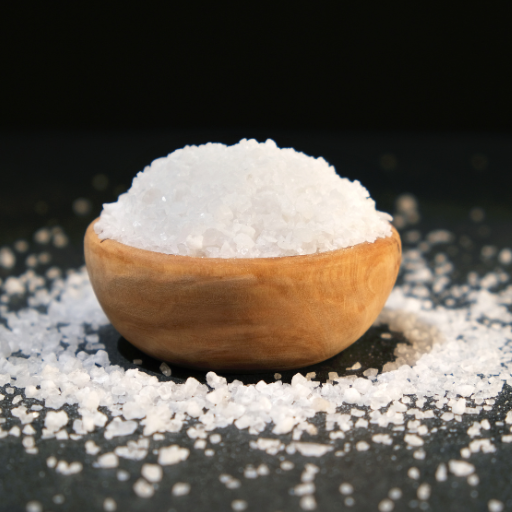
Epsom salt, or magnesium sulfate, is a chemical compound that contains magnesium, sulfur and oxygen. In gardening, magnesium is very significant because it helps make chlorophyll for photosynthesis and general plant growth. Magnesium is important in photosynthesis, the process through which plants convert light energy into chemical energy. It also enhances absorption of other necessary nutrients like nitrogen and phosphorus. Sulfur, another major constituent of Epsom salts, helps in the synthesis of amino acids, enzymes, and vitamins vital for plant growth. By providing magnesium and sulfur to tomato plants, Epsom salt can be used to correct nutrient deficiencies, improve photosynthetic rates and increase overall vigor.
What Is Epsom Salt?
Chemically known as MgSO₄ or magnesium sulfate heptahydrate (MgSO₄•7H₂O), Epsom salt is a crystalline colorless substance that easily dissolves in water. The actual technical data for Epsom salt has a molar mass of 120.366 g/mol, density at 2.66 g/cm³, melting point at1124°F (607°C). Upon its dissolution in water, it disintegrates into sulfate ions SO₄²⁻and Mg²⁺ions thereby availing these critical elements to be taken up by plants immediately.such rapidity of solubility & dissociation are instrumental in enhancing the effectiveness of epsom salts being used as plant nutrient supplements.
Components and Chemical Properties
Epsom salt consists of magnesium sulphate (MgSO₄) made up of three elements; magnesium,sulphur,and oxygen.Mg²⁺is central to photosynthesis through supporting chlorophyll production by plants thus enabling them to absorb solar energy.Sulfur comes as sulfate ion(sulfate) which facilitates amino acid formation that results to the synthesis of enzymes and vitamins. These two substances facilitate good plant metabolism and can aid in nutrition deficiency.
Chemically, Epsom salt has a molar mass of 120.366 g/mol, allowing for accurate dosing when used as a supplement for plants. Its density (2.66 g/cm³) establishes how it behaves as a bulk material while its melting point of 1124°F (607°C) states its stability under normal environmental conditions. Epsom salt easily dissolves in water, ensuring that magnesium (Mg²⁺) and sulfate (SO₄²⁻), essential nutrients for plants, are present in the soil solution. The solubility & dissociation rates of epsom salts play a crucial role here by delivering magnesium and sulphur as primarily bioavailable forms during traditional fertilization practices.
Role in Plant Nutrition
Epsom salt provides magnesium, an essential constituent of the chlorophyll molecule for photosynthesis.Photosynthesis is the process through which plants convert light energy into chemical energy, with efficient chlorophyll production relying upon the presence of magnesium in leaves.The yellowing or chlorosis observed when there’s a lack of sufficient photosynthetic rates due to low levels of Mg may hinder optimal crop growth.
The role sulfur plays as sulfate ions is important in terms of plant metabolic pathways.Sulfur gives rise to amino acids such as cysteine and methionine which form proteins.Sulfur also helps produce coenzymes and vitamins with diverse roles within different biochemical reactions.Besides, yellow leaves or pale coloration, reduced growth may reflect insufficient amounts of sulfur if not included under nutrient regimes where this element might be limited.
The exact determination of molar mass of Epsom salt (120.366 g/mol) is one technical requirement for effective application in plant nutrition. It should also be noted that the density (2.66 g/cm³) and melting point (1124°F or 607°C) are among the reasons why this compound is stable and can be applied under normal agricultural practices. The compound’s high solubility means that magnesium and sulfur ions are available for biological uptake, thereby ensuring plants acquire rapid nutrients. In conclusion, these factors highlight the significance of Epsom salts in enhancing plant growth and performance in general.
Benefits of Epsom Salt for Tomato Plants
Using Epsom salts on tomatoes offers the plant many advantages, promoting its health and productivity. An important constituent of Epsom salt is magnesium, which is vital for plants to manufacture chlorophyll, leading to maximum energy capture and photosynthesis. This is particularly important in tomato plants that need a lot of energy for a good harvest. Magnesium also helps absorb other major nutrients like nitrogen and phosphorus, thus enhancing the overall nutrient content of the plant.
Another ingredient in Epsom salt, sulfur, enhances protein synthesis and enzymatic reactions that increase resistance against plant diseases, hence promoting strong plant growth. It has been observed that applying it regularly introduces healthier foliage and stronger plants. Thus, it’s beneficial to control disorders such as blossom end rot due to insufficient elements prompting them.
For best results, apply Epsom salt either through foliar spray or directly into the soil. Correctly used, it improves fruit setting, develops bigger fruits, and enhances taste. Consequently, including Epsom salts in tomato plants’ nutrient regimen can hugely improve characteristic traits associated with crop vitality.
Correction of Magnesium Deficiency
It is essential for the proper well-being of tomato plants and increased production for this nutritional deficit to be rectified promptly. When magnesium becomes unavailable in adequate amounts within the leaves interveinal chlorosis occurs aptly represented by yellowing between leaf veins while veins remain green lowering photosynthesis rate therefore affecting energy generation process too.Magnesium sulfate, known as Epson salt, contains large quantities; hence, it’s an effective correctional method.
The recommended solution is spraying Epson salts as a foliar application in one tablespoon per gallon water rate, which ensures that deficiency symptoms are eliminated almost instantly via direct absorption through foliage; otherwise, applying a tablespoon per foot height around each base will provide constant uptake from surrounding soil through roots.
Additionally maintaining optimum pH levels within the range 6-6.5 allows easy access to this nutrient for tomatoes. Regular soil testing helps in pH adjustment hence this can prevent situations that promote low magnesium levels. Therefore, equilibrium of magnesium content may be gained by use of these procedures critical to robust growth and quality fruit production.
Enhancing Fruit Quality
Fruit quality improvement in tomato plants is possible with the appropriate application of Epsom salt. In addition to correcting magnesium deficiencies, Epsom salt improves tomatoes’ overall taste, color, and texture. Magnesium is a key component necessary for the development of chlorophyll which plays a vital role in photosynthesis as well as energy transfer within plants. The sufficient availability of magnesium ions through the use of Epsom salt ensures the successful manufacture of sugar compounds that add sweetness and flavor to tomatoes. Furthermore, Epsom salt application can help prevent blossom end rot; an example of a physiological disorder due to insufficient calcium supply in tomatoes. Optimum pH range, balanced nutrient supply and regular soil testing are other crucial practices besides epsom salting that would ensure good quality fruit production from tomato crops only when followed properly.
Enhancing Plant Growth Speeds
Higher growth rates of plants can be achieved through holistic management of soil, appropriate use of fertilizers, and adequate watering techniques. On the other hand, Epsom salt application contributes significantly by supplementing magnesium to enable chlorophyll synthesis and enhance nutrient absorption. Moreover, the inclusion of humus-like compost is known to increase the fertility and structure of soil, thus promoting root formation and assisting in water conservation. Proper macronutrient balance in fertilizers such as nitrogen (N), phosphorus (P), and potassium (K) should be maintained at prescribed levels depending on soil test recommendations for different stages of growth. Maintaining consistent moisture level via correct irrigation methods keeps plants hydrated thus ensuring continuous growth while preventing stress conditions. Incorporating these integrated approaches would go a long way in improving the growth rate, thereby yielding healthier crops and increasing productivity for gardeners.
Signs Your Tomato Plants Need Epsom Salt
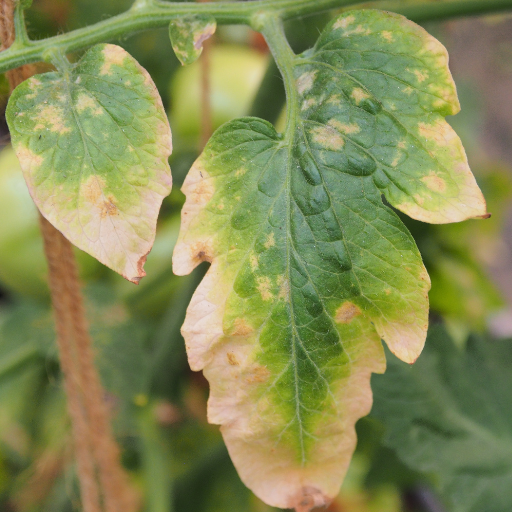
Epsom salt supplementation to tomato plants can be identified through several indicators. This magnesium deficiency symptom is characterized by yellow leaves with green veins – a condition called interveinal chlorosis. However, it is important to note that the low supply of essential nutrients associated with poor fruit set and blossom end rot could cause this situation (Tomato Dirt, 2012). Also, a slow or stunted growth in tomato plants usually indicated a dislocation in nutrient uptake where magnesium from Epsom salt helps increase overall plant vigor and development (Midwest Laboratories Inc., 2017). Another indicator may include the rolling or curling of leaves, as they may indicate plant nutrient stress (Hartz et al., 1996). By carefully observing these symptoms and responding accordingly, we would greatly improve the productivity and health of tomato plants.
How to Recognize Magnesium Deficiency Symptoms
Various manifestation signs often characterize magnesium deficiency in plants. The commonest symptom is interveinal chlorosis; yellowing of leaf tissues while veins remain green. Leaf older leaves are typically affected first. Gradually, the yellowing spreads and sometimes necrosis occurs at the edges of leaves (Hartz et al., 2009). Other indications could be poor growth rates and reduced vigor since magnesium plays an important role in the formation process of photosynthesis involving chlorophylls. Magnesium deficiency in soil becomes acute at lower pH ranges while its availability diminishes significantly with excessively high pH levels.
Technical parameters for diagnosing magnesium deficiency include assessment of soil pH levels because availability reduces at lower or excessive pH values. A pH range from 6.0 to 6.5 is optimal for magnesium uptake (Hartz et al., 1996). Soil testing determines magnesium status whereby concentrations below 6 ppm indicate likely deficiency (Dahnke & Olson, n.d.). However adequate concentration ranging between 0.15% to 0.25% of the plant’s dry weight should be observed in the leaves while it performs its vital functions (Hartz et al., 1996).
Soil Testing and pH Factors
Soils must be tested to diagnose magnesium deficiency in plants correctly. Soil samples should be collected and taken to a laboratory for analysis. The results will provide detailed information on nutrient levels including magnesium (Tomato Dirt, 2012). Good sample collection practices involve taking multiple samples within a field or garden at different depths, usually between six inches to twelve inches deep (Midwest Laboratories Inc., 2017). Nutrient availability directly depends on soil pH. Magnesium is less available under acidic conditions with the cutoff point being pH<5.5, as well as under highly alkaline condition with pH>8 (Dahnke & Olson, n.d.). In other words, by adjusting soil pH to about 6 – 6.5 range, growers can enhance overall plant health and promote effective magnesium absorption. Common amendments used for pH adjustment include lime for raising pH and sulfur for lowering it (Hartz et al., 2009). Farmers can ensure sustainable crop production through regular monitoring and adjustment based on soil tests results besides effectively mitigating nutrient deficiencies.
Applying Epsom Salt to Tomato Plants
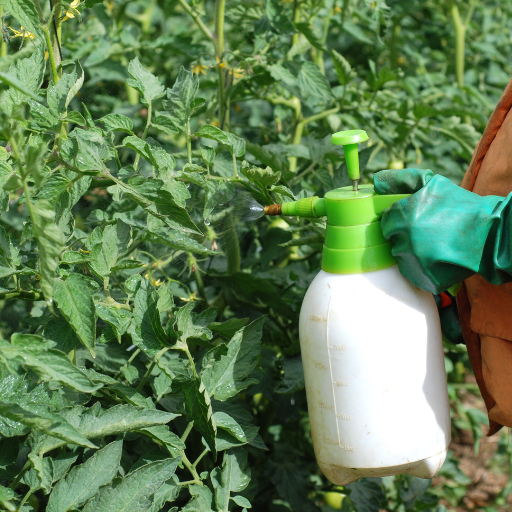
Epsom salt, commonly known as magnesium sulfate, is widely used for treating magnesium deficiency in tomato plants. To apply Epsom salt, a solution can be made by dissolving approximately 1 tablespoon of Epsom salt in one gallon of water. This solution is then used to water the plants at the base so that the soil absorbs the magnesium. Alternatively, foliar spray could be used, meaning 2 tablespoons of Epsom salts mixed with water (a gallon) and applied directly onto leaves once a month. The usefulness of foliar spray is quite striking when there are immediate needs as it helps facilitate quick absorption of magnesium through the foliage. One should inspect on the improvement level exhibited by each plant and adjust application frequency accordingly. With regular use, Epsom salt can help maintain optimal magnesium levels in tomato plants, promoting healthier and more productive plants.
Optimal Application Timing
To establish an appropriate time for applying Epsom salt to tomato plants, it’s important to consider growth stages and environmental conditions where applicable. It should be applied early during the growth phase, including the planting period and when plants start flowering. This ensures that the crop receives a nutrient boost during key developmental stages. Moreover, applications may also be done every four to six weeks throughout growing season due to magnesium maintenance to support continued plant healthiness levels. More frequent foliar sprays might be required especially during periods of high stress or visible deficiency symptoms regarding this element’s status in plant tissues.Use this method only when it is cooler or late in the evening hours because less evaporation takes place; thus, there will be an increased uptake rate.
Methods of Application
Soil Drenching: In this case, epsom salt is dissolved in water before being poured directly on soil surfaces, where a significant amount is absorbed into roots and other underground parts of growing crops such as tomatoes; hence, they grow stronger and become robust, flourishing well into maturity.
Foliar Spraying: Magnesium solution is sprayed directly onto leaves of tomato plants. One should take 2 tablespoons of Epsom salt and mix them with water (1 gallon) before spraying this remedy on the leaf surface once a month. Foliar spraying works faster than other methods do since the magnesium is absorbed more quickly through the leaf tissue rather than taken up by roots. When there is an acute shortage and fast nutrient boost foliar spray would be most appropriate for both cases.
Recommended Dosages
This, therefore, implies that when drenching soil, it should be done every four to six weeks using one tablespoon of Epsom salt per gallon of water, which is enough for a steady supply to the root system, thus ensuring stronger plants. When considering foliar application, you can prepare a mixture containing 2 tablespoons of epsom salts mixed with water (gallon) which you will use just once but within 30 days. This method works best when immediately visible magnesium deficiencies are to be alleviated besides needed nutrients during vital periods of development, among other significant growth stages. Both methods should be employed cautiously, with attention to the plant’s specific needs and growth stage, to avoid over-application and ensure maximum benefit from the supplementation.
Maximizing Epsom Salt Effectiveness
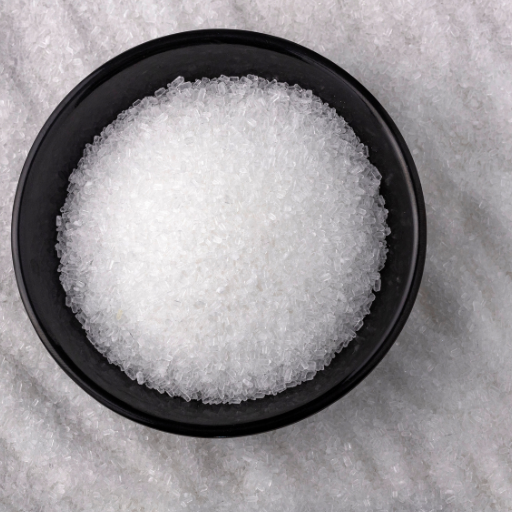
It is important to maintain the quality of Epsom salt in gardening through adherence to good practices and consideration of the needs of individual plants. First, ensure that proper soil testing has been done to confirm magnesium deficiency as excessive use can lead to nutrient imbalances. Another important thing to consider about using the Epsom salt is when and how to apply it; early plant life stages or active growth are good times for this fertilizer since It allows for maximum nutrient absorption. Mixing compost or other organic matter with Epsom salts improves soil structure while enhancing nutrient availability, making it more suitable for plants. Additionally, avoid applying Epsom salt during extremely hot or cold weather because it may stress your plants. Always check their response and adjust dosages accordingly in order to maintain balanced nutrient levels and optimal plant health.
Scientific Evidence and Studies
Several scientific researches have been conducted regarding the effects of Epsom salt (magnesium sulfate) on plant development processes, which provide valuable insights into its benefits as well as recommendations relating to its application. According to a Michigan State University Extension publication, a shortage of magnesium can be eased by adding Epsom salts into soils that lack nutrients such as magnesium. The studies underscore the significance of magnesium element in the production of chlorophyll, which is necessary for photosynthesis and overall plant growth process.
Accordingly, a recent study from the University of Minnesota Extension advises that careful rates—usually recommended as 1 – 2 tablespoons per gallon—are generally safe and effective for most plants. According to this research, a soil test should be carried out before application to avoid potential nutrient imbalances because too much Magnesium could result in disproportionate uptake of potassium and calcium.
Further, the Journal of Plant Nutrition documented increased crop yields and quality, such as tomatoes and peppers, when foliar was applied with magnesium sulfate solution. In addition, they suggested an application rate at 2 tablespoons per gallon since it effectively raised Mg levels in the plant tissues thus improving plant’s overall condition.
Practical Application Tips
- Soil Test Evaluation: Before any application, a comprehensive soil test should be done to determine existing magnesium levels. This minimizes the chances of nutrient imbalances that could affect plant health.
- Dosage Recommendations:
- In gardening, mix 1-2 tablespoons of Epsom salts per gallon of water. This dilute Epsom salt is safe and effective in supplying an adequate amount of magnesium and sulfur without being toxic.
- Foliar applications uses same concentration of 1-2 tablespoons per gallon which proved efficient in increasing foliar Mg nutrition with no ill effect as applied by sprayer for a uniform coverage on the leaves.
- Application Frequency:
- To maintain sufficient quantities of magnesium into both soil and plant tissues, regularly apply the diluted Epsom salt solution monthly.
- From symptoms such as yellowing foliage exhibited by plants, they require weekly or every other week applications until recovery from the deficiency can take place.
- Specific Plant Guidelines:
- Tomatoes and Peppers: Apply 2 tablespoons of Epsom salt per gallon of water once every two weeks during the growing season. Studies have shown that this regimen can significantly increase yield and improve the quality of fruits produced by these crops.
- Roses: For more vibrant blooms and stronger stems use 1 tablespoon per gallon drenching ground around the rose bush monthly.
- Application Time:
- It is best to apply the solution in the early morning or late afternoon, as this will reduce the risk of leaf burn. Avoid applying it in the mid-day sun, as the heat could cause the solution to evaporate very quickly.
Long-Term Advantages
Integration of Epsom salt in your gardening practice yields several long-term benefits to the health of plants and soil quality. This method enhances intake of nutrients such as nitrogen and phosphorus that make plants grow well and increases chlorophyll production for better photosynthetic efficiency. Consequently, over time, plants become more vigorous, thus capable of resisting diseases. Further, Epsom salts contain magnesium that promotes flower and fruit development leading to high yields and good-quality produce. Consistent use also helps balance PH levels, improving soil structure for water retention, thus protecting gardens against drought conditions and leaching out nutrients. These merits collectively constitute sustainable gardening guidelines and healthier crops throughout each season.
Potential Issues When Using Epsom Salt
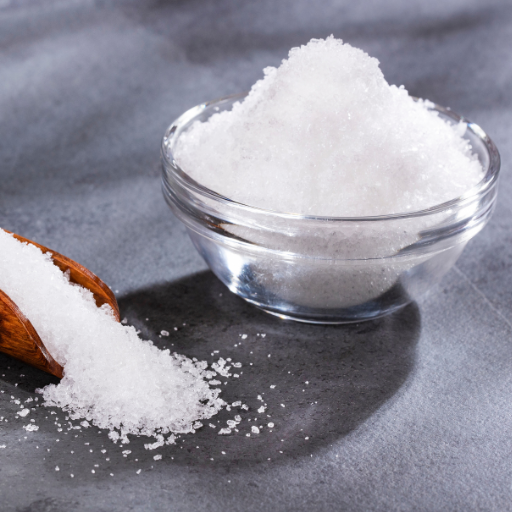
Epsom salt is very useful in gardening but this should not blind you to the associated risks. Simply put, using too much of this can lead to soil magnesium build-up, thereby triggering nutrient imbalances and inhibiting plant growth. Excess magnesium competes with vital nutrients like calcium and potassium required for proper growth of plants. Moreover, Epsom salt is inadequate as a fertilizer since it does not contain other essential elements such as nitrogen, phosphorous and potassium that are crucial for plant nutrition. Another disadvantage is that the over-application of Epsom salt in soil could increase salinity levels destroying the structure of soils causing water loss.This is why caution must be exercised when applying it so as not to exceed permissible amounts.
Risks Related to Overuse
Going beyond the limits set by experts concerning the amount you are allowed to use Epsom salts may lead to several shortcomings in your garden. Research from relevant sources indicates that beyond certain levels, supplementary magnesium from Epsom Salts may impede soil chemistry, disrupting nutrient balance and making the absorption of other essential nutrients such as calcium and potassium, among others, difficult. For instance, most garden plants require soil magnesium contents between 0.5% and 1.5%. Nutrient imbalances occur when high magnesium levels cause antagonism against calcium and potassium uptake.
Another risk associated with excessive use is increased salinity in soils owing to high quantities dumped on lands where crops are grown (Jackson et al., 1996). As a result, plants may have difficulties absorbing water because of elevated salinity levels, which generate an osmotic imbalance leading to osmotic stress characterized by leaf burn, stunted growth, and wilting (Baker et al., 2012). To avoid salinity problems, reputable sources recommend soil electrical conductivity (EC) at values below 4 dS/m (deciSiemens per meter).
Further still, if the long-term accumulation of Epsom salts is done without a balanced fertilization approach, other essential nutrients may become depleted, causing harm to soil health and fertility. Therefore, it is important to get your soil tested from time to time for magnesium levels and accordingly adjust the application rates of Epsom salt such that they align with the specific nutrient requirements of your particular soil and plants. A monthly frequency is recommended, with dosages ranging between one and two tablespoons per gallon of water. Struggling within these limits will help reduce dangers associated with excessive use of Epsom salt.
Epsom Salt Compatibility
For magnesium sulfate also known as Epsom salt, there are many interactions with key nutrients hence the need for a balanced approach in its application. In relation to nitrogen (N) and phosphorous (P), magnesium takes part in chlorophyll formation while enhancing P mobilization respectively. Whereas too much magnesium can inhibit calcium (Ca) and potassium (K) uptake, which compete with it antagonistically. Specifically, high magnesium concentrations can result in a magnesium-induced calcium deficiency that impairs cell wall structure and function primarily affecting developing tissues especially fruit quality.
Furthermore, nutrient compatibility depends on soil pH levels. Most crops thrive best at soil pH values between 6.0 and 7.0 because they ensure optimal availability of minerals necessary for maximum plant yield (Wolf et al., 2002). Excess magnesium interferes with the normal pH range, making the medium either too acidic or too alkaline for good nutrient intake into plants.
To determine compatibility among different elements ion ratios should be analyzed by carrying out various tests on soil samples. For example, optimal Mg: Ca ratio should generally be between 1:3-1:5 when analyzing different soils. Soil results showing figures above or below this range indicate imbalance resulting because farmers have not been properly applying enough Magnesium supplementation appropriately provided.
Data from reputable sources buttress the importance of integrating Epsom salt into a general fertilization program. For instance, regular soil testing to track magnesium levels can determine precise application rates and prevent adverse interactions. Empirical studies suggest applying magnesium sulfate at 1-2 tablespoons per gallon of water monthly to maintain balanced nutrient profiles without fostering antagonistic effects.
Environmental Impact Considerations
Primarily through runoff and leaching into nearby water sources, excessive use of Epsom salt in agriculture can lead to environmental concerns. High magnesium levels may perturb soil’s native nutrient balance leading to deficiencies in important macro and micronutrients thus affecting plant health and biodiversity. Furthermore, elevated magnesium concentrations introduced into aquatic ecosystems via runoff could alter water chemistry and cause imbalances which might harm aquatic life. Such risks can be avoided by prudently using Epsom salt as well as embracing sustainable agricultural practices like integrated soil fertility management combined with regular monitoring of the environment.
Frequently Asked Questions (FAQs)
Q: What are the benefits of using Epsom salt on tomatoes?
A: Epsom salt, made up of magnesium sulfate, provides essential nutrients like magnesium and sulfur that promote healthy growth. It helps in chlorophyll production and enhances nutrient uptake, which is good for tomato plants.
Q: How do I apply Epsom salt to my tomato plants?
A: To add Epsom salt to the soil, you can mix 1 tablespoon of Epsom salts with water and spray it on the foliage. Alternatively, you can sprinkle 1 tablespoon around the base of each plant and water it in.
Q: How often should I use Epsom salt for tomatoes?
A: Applying Epsom salts per plant every two weeks is generally recommended. You may also add Epsom salt to the soil before planting tomatoes to improve soil’s magnesium levels.
Q: Does Epsom salt help with blossom end rot?
A: While Epsom salt can provide magnesium, it’s not a remedy for blossom end rot, which is usually caused by calcium deficiency. Adding a calcium-rich fertilizer can address this specific issue.
Q: Can too much Epsom salt harm my tomato plants?
A: Yes, using too much Epsom salt can cause imbalances in soil’s nutrients and may harm plants. It’s essential to use the recommended amounts to avoid excessive accumulation of magnesium in the soil.
Q: Is Epsom salt good for tomato seedlings?
A: Epsom salt can be beneficial for tomato seeds and seedlings by providing magnesium for germination. A diluted solution of Epsom salts in water applied to young seedlings can support healthy growth.
Q: Can I use Epsom salt for other vegetable plants in my garden?
A: Yes, Epsom salt can be used for other vegetable plants like pepper plants to improve overall health and nutrient uptake. It promotes strong stem growth and enhances fruit production.
Q: What signs indicate my tomato plants may need Epsom salt?
A: If your tomato plants look like they have yellow leaves or show signs of nutrient deficiency, such as slow growth and pale foliage, adding Epsom salt may help improve their condition.
Q: How can I ensure I’m using Epsom salt correctly in my vegetable garden?
A: To use Epsom salt correctly, measure the recommended amount (1 tablespoon of Epsom salts) and apply it either by spraying or adding it to the soil. Always monitor your plants for any signs of nutrient excess or deficiency.






